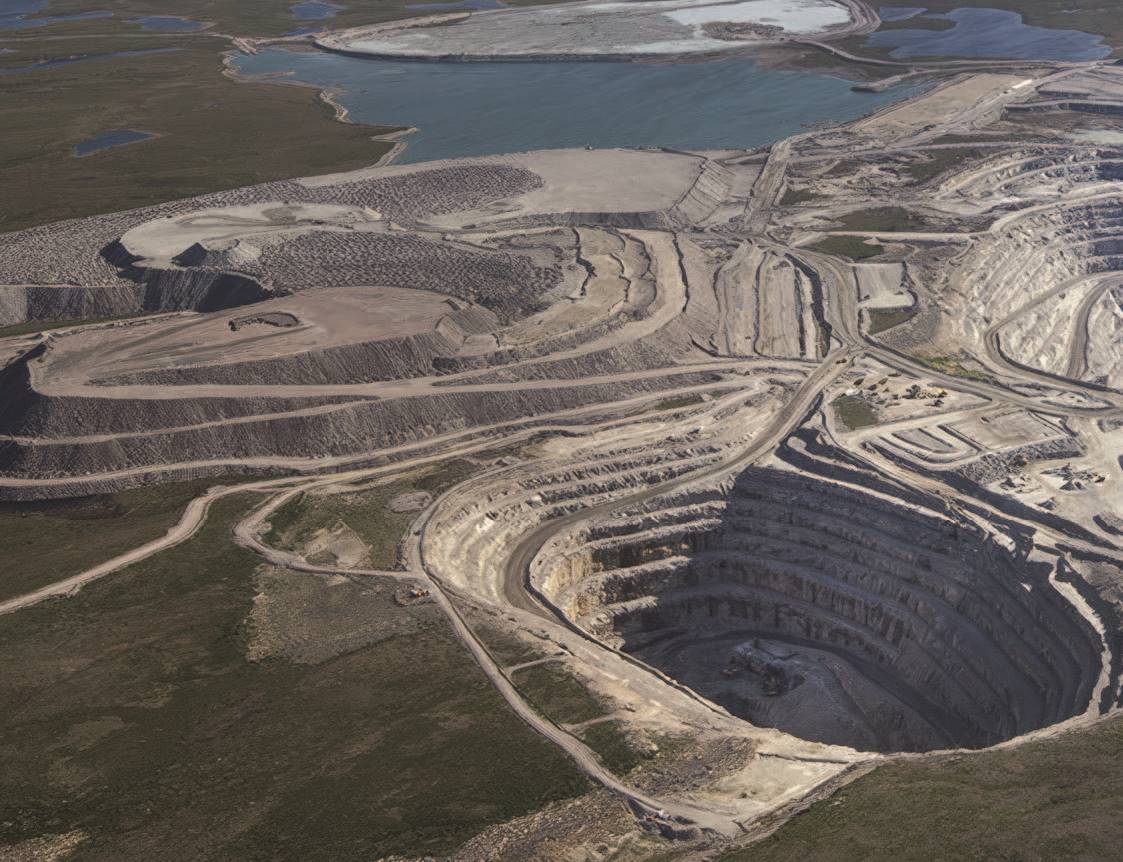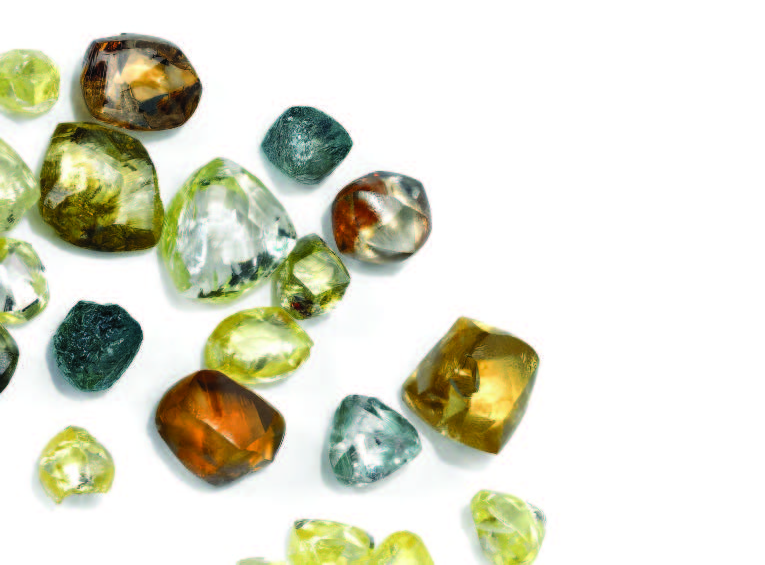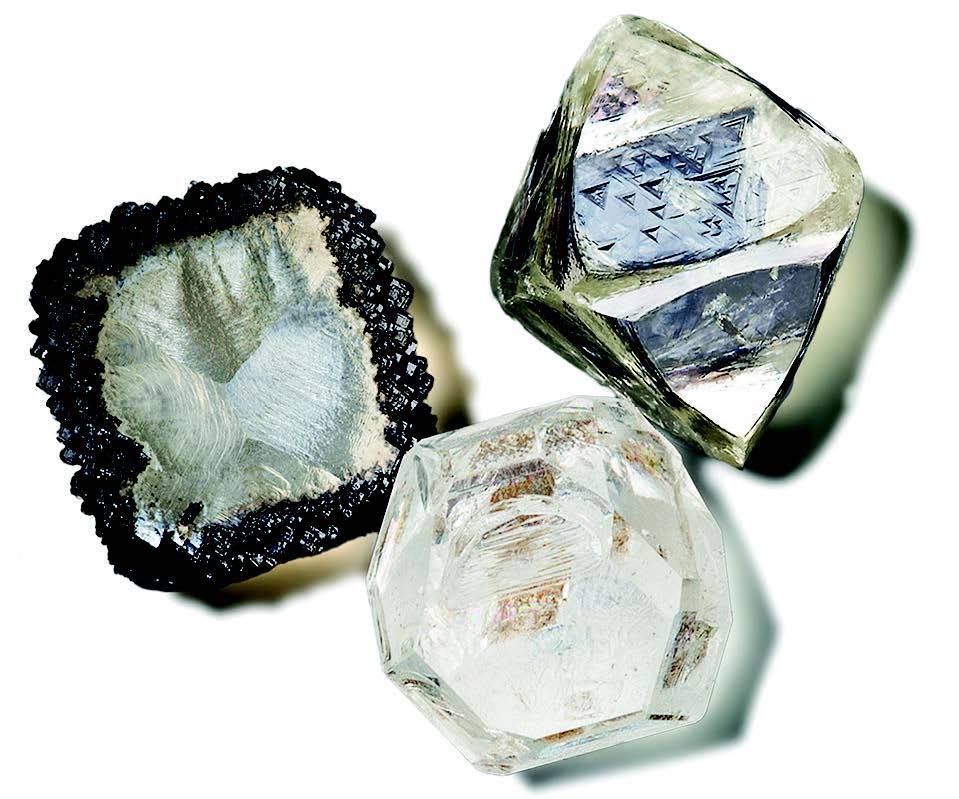What few people realise is that anyone can predict the future. Everyone can do it - it’s easy!
However, doing so with pinpoint accuracy is not.
People who are in the business of making predictions or forecasts - the difference between the two is the time frame - are simply guessing, and sometimes they get it right and sometimes they don’t.
There has never been a shortage of people wanting to predict the fate of the diamond industry - from mining and, cutting and pricing to retailing - especially since the arrival of man-made diamonds as a serious competitor to natural diamonds.
And throughout this time all eyes have been on De Beers, the once monopolistic behemoth of the international diamond market. As ‘quality’ lab-created diamonds increasingly became a reality and a legitimate rival to natural diamonds (at least in some people’s minds) every decision and move by De beers has been dissected.
Even Jeweller, as far back as 2005, was sufficiently bold to predict De Beers’ move into the man-made sector when we suggested that it should begin manufacturing synthetic diamonds.
Rather than fighting the inevitable, we argued, perhaps De Beers would be best to embrace the sector. After all, we noted you can’t win a competition in which you do not compete.
Spectators don’t win games!
Of course. All that came true 13 years later - in May 2018 - when De Beers announced its move into the man-made diamonds sector by launching Lightbox Jewelry. However, 18 years later it has now announced its departure from the product category.
Company officials explained that the controversial ‘brand’ is being closed due to the dramatic decline in lab-created diamond pricing. The decision was described as a commitment to the future of natural diamonds.
Ironically, the establishment of Lightbox Jewellery was once said to be a commitment to lab-created diamonds!
In an interview with the New York Times, De Beers’ CEO Al Cook emphasised the importance of differentiation between natural and lab-created diamonds.
“For 600 years, people have loved natural diamonds because they are beautiful and rare. Synthetics aren’t rare, and they certainly won’t be in 600 years’ time. Natural diamonds will be even more scarce than they are now,” Cook said.
“Then again, none of us will actually be around to find out.”
He added: “The fact that you can now buy a $299 engagement ring at Walmart would be a win in the eyes of my predecessors. Because some retailers are still selling that ring for $3,000, we have work to do to differentiate and push the desirability of natural diamonds.”
When Lightbox Jewelry was launched, Bruce Cleaver was CEO of De Beers.
During an ‘exit’ interview with JCK Online in 2023, he discussed the risks involved with the brand and highlighted the importance of ‘separating’ the categories from a consumer perspective.
“I say to people, it’s one of the scariest things I’ve ever done. If we launched this product too soon, we may legitimise a whole category quicker than we should have. What if it was launched too late, and the genie was out of the bottle?” Cleaver asked.
“We probably launched it at about the right time. I’ve been surprised there’s been very significant growth in lab-grown production in the last 18 months. But my view is that it will accelerate the two markets separating.”
 |  |
| De Beers Gahcho Kué Mine |
More predictions
Was the De Beers exit inevitable? Perhaps, if the way the lab-created diamond market has behaved and evolved.
In November 2023, ABC Australia asked: ‘If diamonds are a girl’s best friend, why are their prices in freefall?’
The article noted that the price of a one carat diamond had seen a 32 per cent decline in less than two years and for a half carat stone, prices have fallen almost 40 per cent.
At the time diamond industry analyst Paul Zimnisky said, ”The current softness in natural diamond prices is primarily a correction, following what I would say is a record run up in prices that we saw in 2021 and 2022.”
He also noted that, ”Almost every category of natural diamonds went parabolic to the upside, due to supply shortages, following the stimulus, primarily in the US, during the pandemic.
“Now we’re on the other side of that … we’re experiencing a demand shock in the other direction.”
Exactly 12 months later, in an article titled, ‘The lab-grown diamond boom is over’, Zimnisky told BusinessInsider.com that he could see jewellery stores scaling back their business in lab-created diamonds while ramping up their focus on natural diamonds.
He told the publication that most jewellers aren’t even bothering to maintain inventory of lab-created diamonds, and are only purchasing stones on consignment.
Zimnisky predicted that sales growth could fall as low as a single-digit percentage, down from the 20-30 per cent growth when lab-created diamonds were at the peak of their popularity.
Late last year, Edahn Golan, another diamond industry analyst and commentator provided his thoughts for 2025.
In December 2024, he described the coming year as one of ‘realignment’.
“For the natural diamond industry to achieve its goals, requires the repositioning of diamonds as a true luxury item: rare, well-designed, exceptionally made, and pricey. By targeting the client base to diamond connoisseurs and aficionados. Diamonds will once again become aspirational,” Golan wrote.
He believes the way in which the industry should achieve the goal of diamonds becoming de-commoditised and once again aspirational is “to reposition diamonds as a true luxury item: rare, well-designed, exceptionally made, and pricey. The target client base should be connoisseurs and aficionados”.
 |
| De Beers Diamond Roughs |
Control your own destiny
Of course, this will require marketing and, perhaps, that’s where the industry should go back to the future, not being concerned about competing on price.
That is, focus on your own business and not that of others.
And on that note, just as there has never been a shortage of people willing to make predictions and forecasts about the diamond industry, there has never been a shortage of industry research.
However, the problem with research is that it’s often incorrect. One only needs to consider how wrong political research is these days, where political experts who predict one party to win an election, loses.
Furthermore, consumers often don’t know what they want.
In fact, some argue that it’s not the customer’s job to know what they want.
This is best illustrated by Apple’s legendary (former) leader, Steve Jobs who is reported to have said, “It’s really hard to design products by focus groups. A lot of times, people don’t know what they want until you show it to them”.
Put another way, though there is no evidence he actually said it, a quote attributed to Henry Ford concerning his first automobile is: ”If I had asked people what they wanted, they would have said ‘faster horses’.”
Though customer research should not be ignored, both points are correct; however, each can logically be taken to the next stage: Customers having asked for, or not having known that they need X, can then decide they were wrong.
Using Job’s explanation, having been shown lab-created diamonds, customers might ultimately decide they are not what was promised or their preferences change.
Consumer failure
This could be part of the explanation about LightBox’s ‘experiment’ with a bridal jewellery collection. In June 2023 the company began a trial of engagement rings consisting of 16 pieces featuring lab-created diamonds with prices ranging from $AU895 to $AU8,950.
However, it didn’t take long for the company to realise that either its assumptions or research was wrong, the product and pricing was wrong or the required demand was wrong.
A mere four months later the jewellery collection was ended, indicating that the commercial proposition for many lab-created diamond engagement rings is ‘likely unsustainable’.
But here’s the kicker!
A De Beers statement at the time read: “Through the test, the company deepened its understanding of lab-grown diamonds and evaluated the changing landscape and consumer perceptions associated with them,” and that lab-created diamonds had a promising future.
“Lightbox will continue to focus on where it sees the most promising future opportunities in the sector – in fashion jewellery and in loose stones at accessible price points – and will not sell lab-grown diamond engagement rings.”
Of course, that was September 2023 and now it’s May 2025 - only 20 months later - and LightBox has gone the way of the dinosaurs! The entire company was closed.
So much for a promising future - customers don’t know what they want until you show them, and then maybe they don’t want it after all.
 |
GIA’S RESEARCH ARCHIVE
Sir Oppenheimer Student Collection Left: Lab-grown CVD rough diamond; Center: Laboratory-grown HPHT rough diamond; Right: Natural rough diamond |
Of course, the real problem could have been with the manner in which De Beers launched, distributed and promoted the product rather than the concept of man-made diamonds themselves.
However, the issue is more complex, as it always is when human emotion is involved.
Writing for The Diamond Press, industry analyst Avi Krawitz suggested that De Beers’ experiment with man-made diamonds reinforced the fact that it couldn’t compete in the engagement jewellery market with lab-created diamonds without undermining the value of natural diamonds.
“It’s a course correction that, had it come sooner, might have saved the industry years of mixed messaging.”
He suggests that this lesson positioned De Beers to choose between the two categories, instead of playing both sides of the fence.
“Disrupting the lab-grown diamond market was never a one-brand job. It requires an industry-wide strategy,” Krawitz writes.
“A co-ordinated approach built on cost-based pricing, quality assurance instead of grading, and fashion-focused positioning would carry far more weight if adopted at scale.”
He adds, “With Lightbox now shuttered, De Beers appears to be returning to its roots — partnering with retailers and reviving category marketing to reaffirm the unique value of natural diamonds. It’s a course correction that, had it come sooner, might have saved the industry years of mixed messaging.”
“Still, it’s a welcome shift — not just for De Beers, but for a trade that’s long needed a clearer narrative and more unified strategy in the face of lab-grown disruption.”
Is Krawitz correct? Yes, but again there’s more to it and Golan points to other issues.
“In January 2020, the retail price of a one-carat round lab-grown diamond was 35 per cent less than a comparable natural diamond,” Golan wrote in September 2023.
“Currently, the price gap is 76 per cent even as the price of natural diamonds is declining. Natural diamonds, with all their fluctuations, are a relatively steady commodity. Lab-grown prices, on the other hand, sink like a stone in water.
“In this case, the body of water is the consumer market. For lab-grown to continue to be a viable consumer product, some perceived value needs to be created. Until then, the lab-grown pipeline is driving fast into a dead-end.”
Wrong questions
Is there a future for lab-created diamonds? Yes, of course.
But, is this the right question?
Is a more appropriate question: “What does the future hold for traditional jewellery stores that focus on the lab-created sector?”
If the price of lab-created diamonds keeps decreasing, and consumers become more savvy, aided increasingly by artificial intelligence, can it be a profitable category for independent jewellers?
Along with the rise of online behemoths such as Blue Nile, Brilliant Earth and James Allen, anecdotal evidence suggests that the target customer is ‘netizens’ - an all-encompassing term describing online customers, web customers, social media users, and digital consumers.
These consumers prefer shopping via digital channels rather than at physical stores.
This, along with how natural diamonds should be positioned and marketed against their man-made cousin, is another topic entirely. Perhaps for another time.
And, of course, it introduces new predictions and forecasts along with different people making the predictions and forecasts.
This is something a publication such as Jeweller largely leaves to others. It’s our job to report on the past, analysing what other experts have predicted.
That said, the US management consultant once said: The best way to predict the future is to create it.
It seems that, when it comes to man-made diamonds, creating the future is something that De Beers was unable to achieve, along with predicting it!
READ EMAG